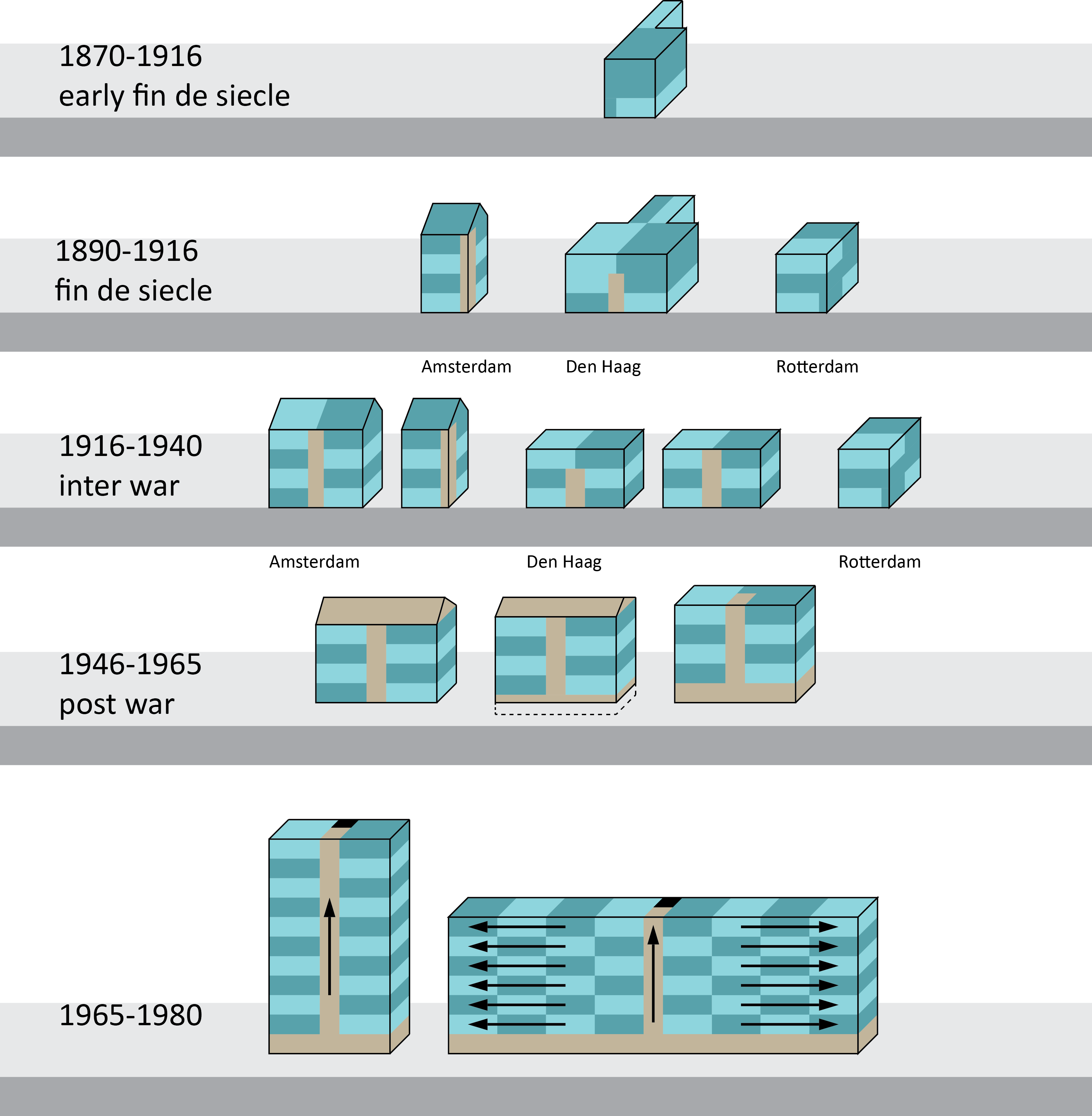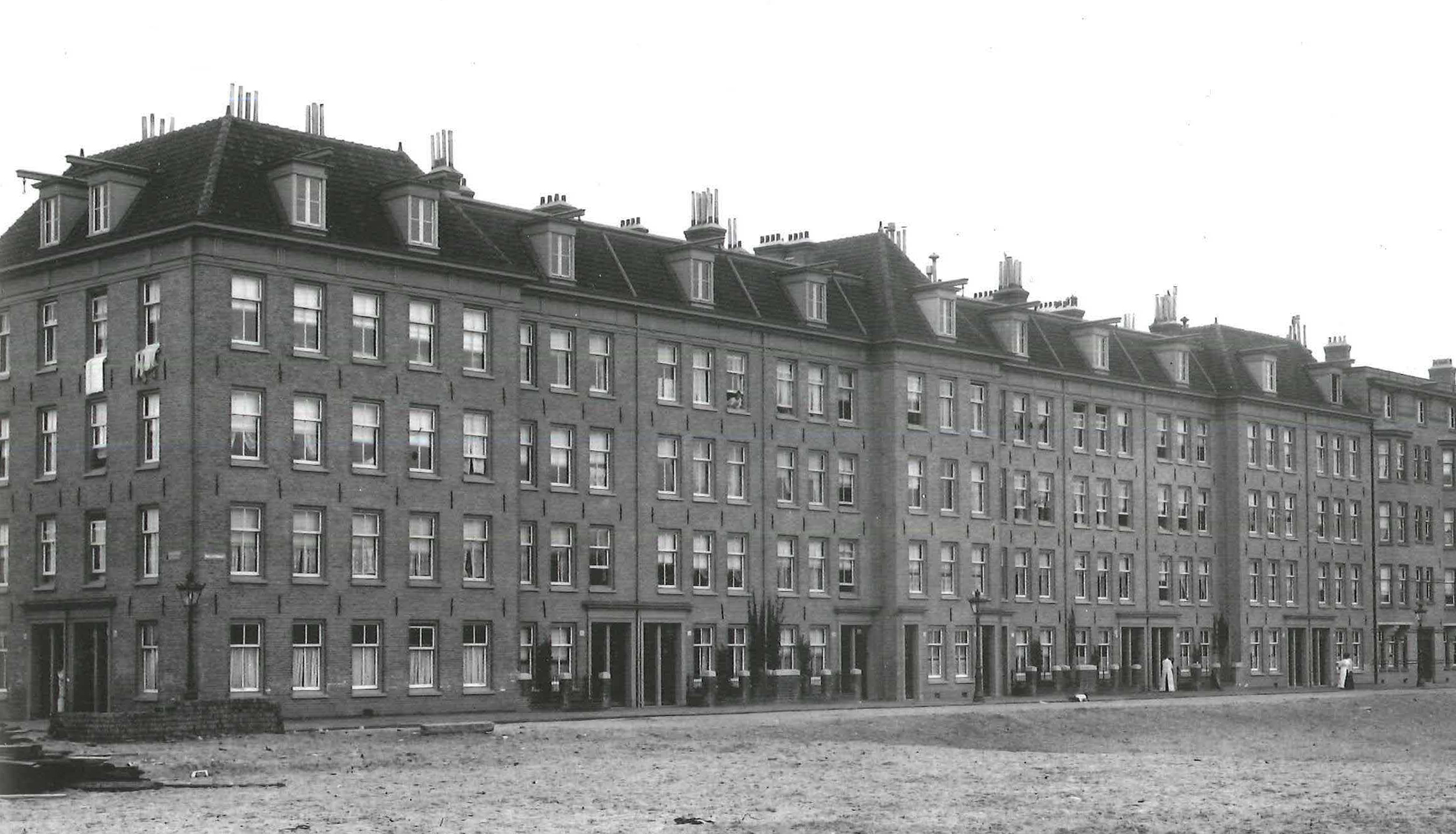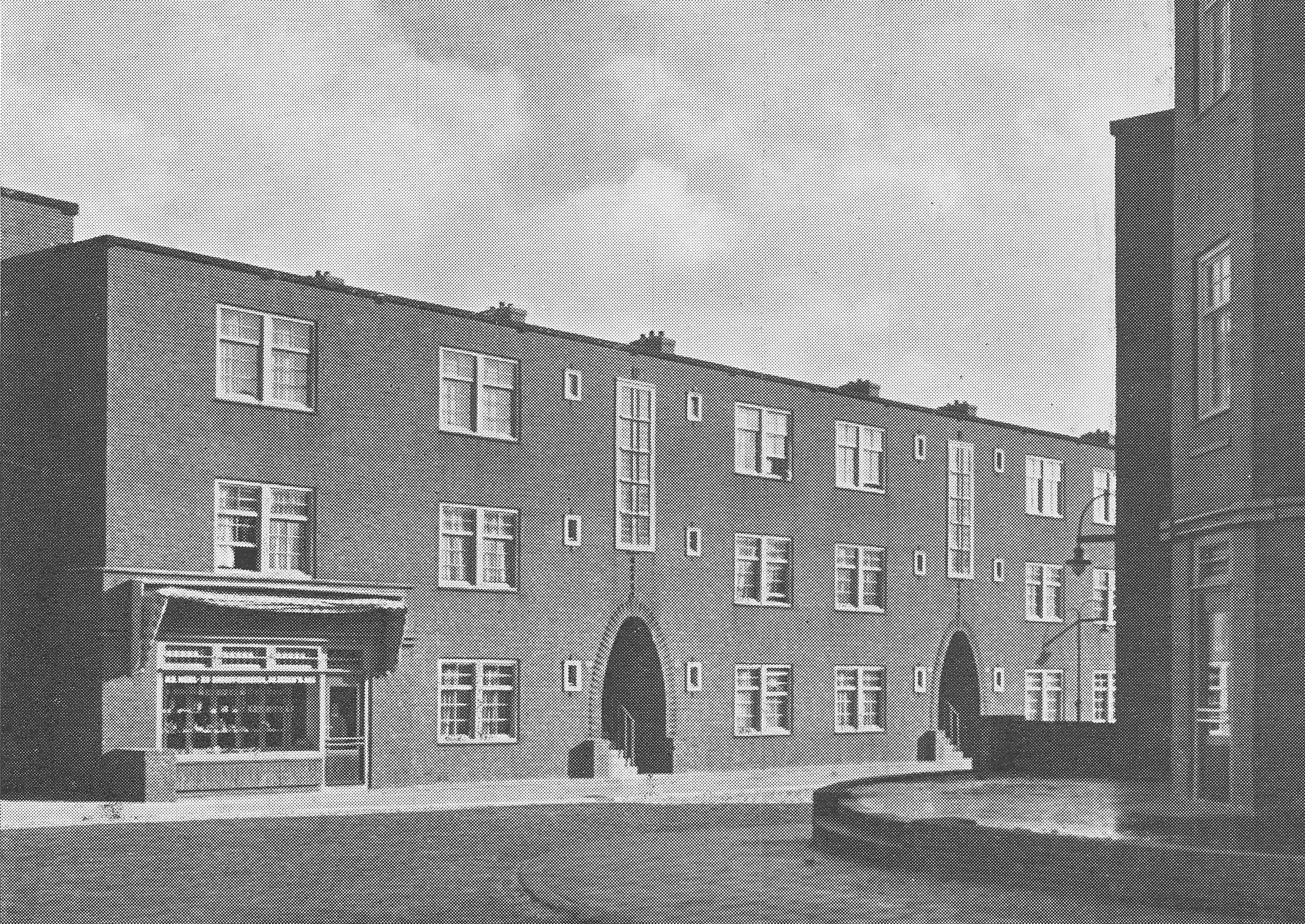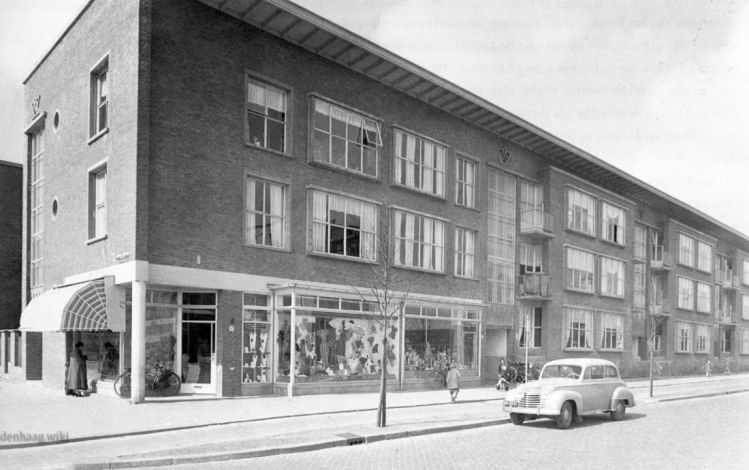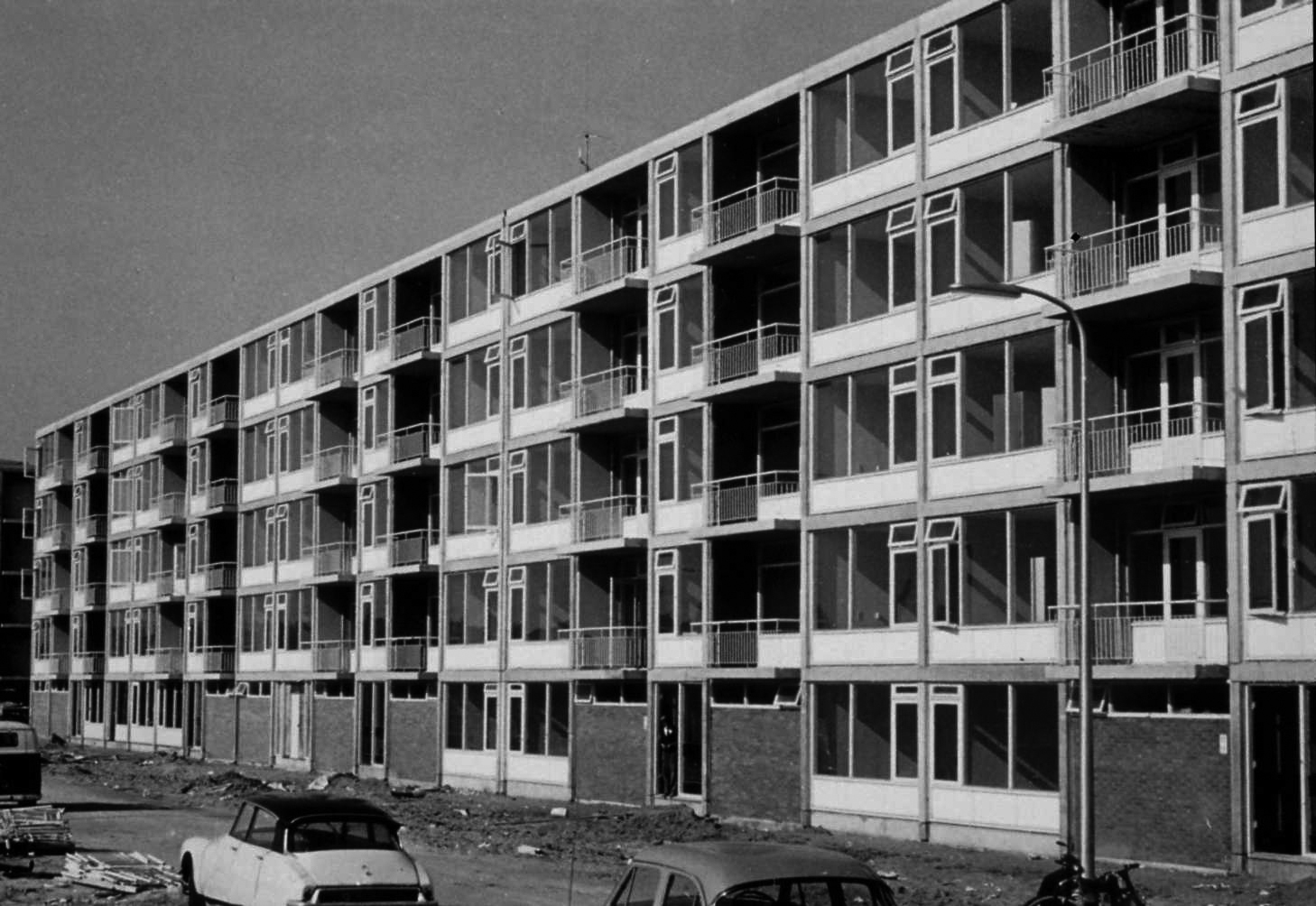Typology of walk-up apartment buildings
Most Dutch walk-up apartment buildings from the post-war period are owned by housing associations, whereas the interwar apartments are owned by housing associations or the residents themselves. The majority were built during two periods: 1916–26 (the interwar types) and 1946–65 (the post-war types). These time frames are related to several protocols, such as the Housing Act of 1901-1902, municipality building bylaws and laws on the financing of dwellings. Today (2016), the Netherlands has 799,956 apartments that were built in the period 1906–65, representing about 10.47 per cent of the total Dutch housing stock. In Amsterdam there are 155,456 such apartments (36.6%), in Rotterdam 104,014 (33.4%), in Den Haag 107,253 (42.4%) and in Utrecht 29,482 (19.7%) (CBS, 2017). This amounts to about 400,000 apartments in the four cities, and we assume that most of these are in walk-up apartment buildings. Despite many similarities, there are also important differences between walk-up apartment buildings. Figures 3 and 4 shows the different apartment buildings types in the Netherlands. Our inventory led to the classification of four subtypes of walk-up apartment buildings:
- Interwar buildings built using traditional construction methods in Amsterdam, similar to building types of the European metropoles of the nineteenth century.
- Interwar buildings built using traditional construction methods in Den Haag, derived from the traditional Dutch boven-beneden-woning from the fin siècle, with two apartments on top of each other, each with its own entrance door.
- Post-war buildings built using mixed construction methods, i.e. traditional (brickwork loadbearing walls, façade) and prefabricated construction components (foundation piles and beams, floor elements, stairs).
- Post-war buildings built using construction systems, i.e. the dry assemblage of prefabricated construction components.
Moreover, the challenges that must be addressed when adapting the walk-up apartments are shared by the building types. The challenges are related to the need to renovate while the buildings are inhabited and to provide them with ramps and lifts to enhance tenant mobility. Most importantly, the energy performance of these building is low and needs to be improved in order to achieve the goal of having a carbon neutral building stock by 2050.
